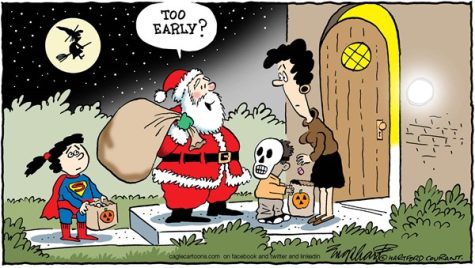“Healthy Foods” in schools create controversy

American Lunchroom

For apple-pie-eating and burger-grilling Americans, food has always been a huge point of interest in this country. In 2010, First-lady Michelle Obama pushed for, and eventually established, the Hunger-Free Kids Act of 2010 through the United States Department of Agriculture. Since then, there have been lots of push back from states, school districts, cafeteria workers, concerned parents and of course, students. Those affected across the nation are angry at the supposed infringement of their constitutional rights. They believe that students should make their own decisions regarding lunch, and the states and/or individual school districts should be able to decide if they will accept and adhere to the act. The irony in the name of this act is that they use the term “hunger-free,” when in reality it may just create the opposite effect.
The basic perimeters of this act is an increase in lunch prices, a ban on white grains, sodium, as well as sugar, dairy and calorie limits, increase in the Secretary of Agriculture’s power over the programs, and in some schools, a mandate that the largest portion of the meal has to be fruits or vegetables. These specific and confining regulations cause a rise in the price of food bought by the cafeteria, which means the districts must then cut back on the quality of the foods in order to stay within the budget set by the federal government. Every day, 5 billion lunches are served in schools. And all of these lunches have some sort of nutritional restriction as well as some
cutback on certain ingredients. But each individual person needs different amounts of this type of nutrition for their body to function. After all, there is no one-size-fits-all for the human race.
However, many schools are not only imposing rules on the breakfasts and lunches sold at the school, but they are also saying students can’t bring their own packed lunch from home. According to the Chicago Tribune, a public school in Chicago’s Westside has banned students from bringing their own lunches. The principal, Elsa Carmona, says that the kids needed to be protected from their own unhealthy food choices. And while there may be good intentions, the law can take it too far. After all, a teacher in West Virginia was fined for handing out wrapped candy as a reward to her students.
While there is a lot of animosity toward this act, many people do support it, saying that it has done a lot of good to combat childhood obesity. Substituting healthy foods in the place of more processed foods is said to help academic success as well as the overall wellbeing of the students. This act was intended to improve the quality of the foods served, and to teach kids to eat healthy on their own. However, many would also say that schools do not have to right to take away the freedom of students and their parents to decide a young adult’s personal lunch menu. In addition, the state shouldn’t prohibit a teacher from doing something as simple as giving candy to her class.
To take away the student’s choice is to teach them that they are not smart enough nor equipped enough to handle making decisions on their own. For high school students, this idea is especially concerning. At that age, these students are entrusted with driving and are expected to excel in all areas of school. While many of the changes affecting school cafeterias are positive, some of the side effects may outweigh the positives. It should be up to the individual, or his or her parents, to decide what is right for that person’s body. There is a line between teaching children how to make healthy choices, and then forcing them to.











Ms.Vanacore • Sep 12, 2016 at 10:23 pm
I enjoyed the tone of this article! I wanted to keep reading it as soon as I read the first sentence. There was a nice balance in the way the author presented both sides of the controversial topic.
Food for thought…
(Pun intended)
I am interested in hearing different opinions from students about healthy school lunches. In addition, adding a few details about why school lunch was changed through a food science lens would be helpful for the reader. The direct effects between child obesity and food would be great to know also!
Lastly, I loved the ending statement and how you wrapped up your thoughts. I would of even loved to hear an expanded version of your point of view.
Great article Meredith Turner
Ms Chance • Sep 7, 2016 at 9:18 am
I wish Ms Turner had included the reasons why white flour, sugar, and excess sodium are so detrimentals and addictive (look at our student population in school and our obesity rates), and why it might be reasonable to teach students first by limiting choices until they are in a position to choose wisely. Responsible parents and teachers limit children to guide them all the time.